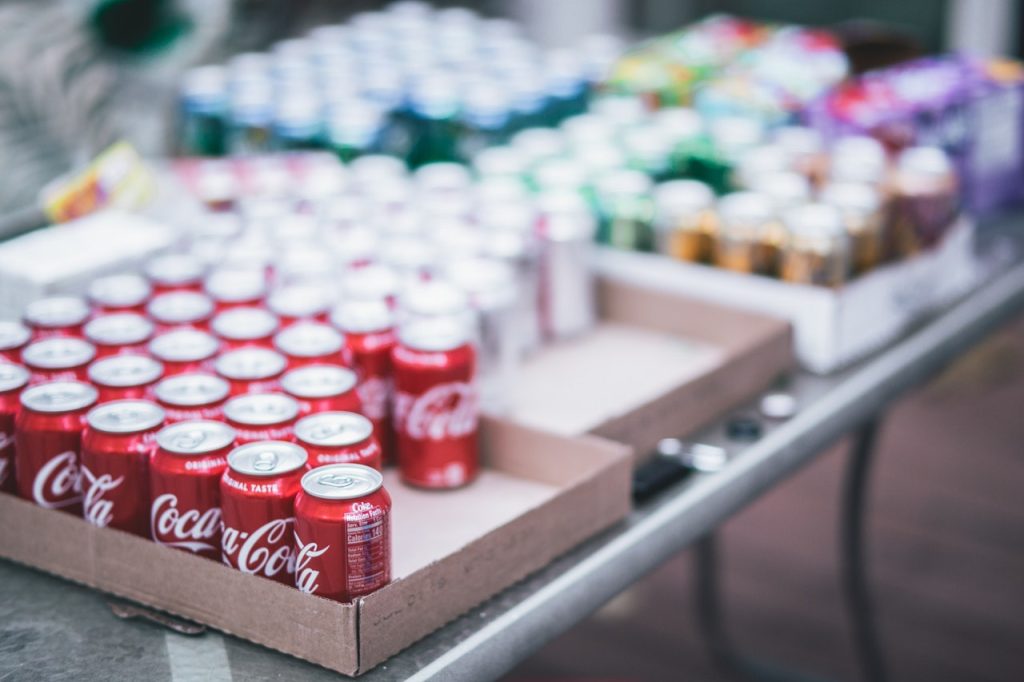Packaging plays an important role in the preservation of food items. It ensures the safe delivery of products to consumers. One of the most popular materials used in the food preservation process is metal cans. If you walk down aisles of groceries, you’ll notice shelves of canned packaged foods.
Canned food products have become an essential part of every person’s pantry. They are especially handy in areas where there aren’t refrigerators (since food must be stored in cold places to preserve its freshness). Canning also promotes the safe preservation of food items by preventing the development of harmful bacteria.
If you’re considering going down the canned goods route, here’s everything you need to know.
What are Canned Packaged Foods?
Canned packaged goods are products that undergo a sealing process in airtight containers, ensuring extended shelf life without compromising quality. These goods offer unparalleled convenience, providing quick and easy meal solutions in our fast-paced world. With various options available, such as soups, vegetables, fruits, meats, and sauces, canned goods are versatile staples for households and restaurants.
The canning process preserves the nutritional value and freshness by eliminating bacteria and enzymes. Canned goods are in high demand due to their reliability and adherence to quality control measures. They reduce food waste, provide access to out-of-season produce, and offer a steady supply of nutritious food during emergencies.
How are Canned Foods Packaged? The Materials
There are two types of cans used for canned packaged goods: two-piece and three-piece cans.
Two-Piece Cans
With two-piece cans, the bottom and the wall of the can are formed with a single piece while another piece is used for the top part. Also called ‘drawn cans,’ these cans are mostly used for food and drinks. Two-piece cans, which are often made from aluminum or steel substrates, are also used by businesses that offer sweets (the cans usually have slip lids).
To produce two-piece cans, manufacturers use metal panels or unwind metal coils and stamp discs from them. Next, they coat both sides of the metal substrate and start the deformation stage. During this step, they use a press to cup the discs and form a short beaker-shaped can.
There are four different types of two-piece cans:
- Single-drawn cans. These are shallow cans manufactured via the drawing one process. These are the cans used for sardines, tuna and other ready-made meals.
- Drawn and redrawn (RDR) cans. These tall cans are made using the draw and redraw process, which involves two to three operations. It can also be made via multiple draws. Large cans used for salmon are examples of RDR cans. Some RDR cans have larger top diameters compared to the bottom parts. They also have a tapered shape so you can easily slide the cans during transport.
- Drawn and wall-ironed (DWI) cans. DWI canned goods are usually beers and beverages. These cans are usually made from aluminum or steel. The production process includes the processing of a drawn metal cup to create a cylinder. This process is called wall ironing; it decreases the can’s thickness by ironing it out.
- Drawn and ironed (DI) cans. These are variations of the DWI cans. These cans hold canned goods that are for humans or pets.
Three-Piece Cans
Three-piece cans, as the name implies, are cans that consist of three parts: the bottom, body, and lid. These cans are often used to package food but can also be used for non-carbonated drinks like fruit beverages.
Three-piece cans are usually made from tinplate steel or tin-free steel. But if the business wants cans with easy-to-open lids, these cans can be made from aluminum.
What are the Pros and Cons of Canned Packaged Goods?

Can packaging is one of the most common packaging methods for food products and beverages? They can also be used for medicine, cosmetics, and other products.
However, like boxed packaged goods and other packaging materials, canned goods have their pros and cons.
Advantages of Canned Packaged Goods
- Increased shelf life. Unlike other packaging materials, cans offer increased shelf life due to the durable material that doesn’t react with food. Tin cans, especially, ensure that food retains its goodness and can be stored for a longer time.
- Easy to handle. Cans are easy to handle because they are lightweight. Weight is an important issue when it comes to transporting products. Most logistics and transport companies charge transport fees based on the weight of the goods being shipped. If you want to reduce the cost of production, consider switching to a more lightweight alternative (like cans)
- Flexible packaging. One of the best things about can packaging is that it allows for flexibility. You can easily arrange these cans the way you want without worrying about deformities.
- Durable packaging. Even when subject to high impact, canned packaged goods will maintain their original shape. Therefore, you don’t have to worry about delivering deformed cans.
Disadvantages of Canned Packaged Goods
- Acidic products. Cans are not ideal for products with high acidity since they are corrosive. The can might react with the product and cause contamination.
Like bagged packaged goods, canned foods are staples in every person’s home, which makes cans an essential packaging material. If you want to ensure the safety of your products (without worrying about packaging), consider making the switch to canned packaging.
Things To Consider While Choosing Canned Packaged Foods
You need to consider a few things when choosing canned packaged goods. In the following section, we will go over the most important ones.
Storage Location
When selecting canned packaged foods, it is crucial to consider the storage location. Proper storage conditions and expiration dates play a vital role in maintaining the quality and safety of the products. Here are a few tips to keep in mind:
- Ensure that the store or retailer you purchase from follows proper storage practices. Cans should be kept in a cool, dry place away from direct sunlight and excessive heat to prevent deterioration.
- Expiration Dates: Always check the expiration dates on canned goods before purchasing. Choose products with a reasonable shelf life, ensuring that you have ample time to consume them before they expire.
- Tips for Proper Storage: Once you bring the canned goods home, store them in a pantry or cupboard with a stable temperature, preferably between 50°F and 70°F (10°C to 21°C). Avoid storing them near heat sources or in areas prone to moisture, as it can lead to rusting or spoilage.
Labeling
Understanding the information provided on the labels of canned packaged foods is essential for making informed choices. Pay attention to the following details:
- Ingredients: Read the ingredient list to know what exactly is contained in the product. This helps in identifying potential allergens or ingredients you may want to avoid.
- Nutritional Values: Look for the nutritional information on the labels to assess the product’s health benefits. Consider the calorie content, macronutrients (protein, carbohydrates, fats), and vitamins and minerals provided.
- Allergens: Check for any allergen warnings or declarations to ensure the product does not contain ingredients that may cause an allergic reaction.
- Expiration Dates and Batch Codes: Learn how to interpret expiration dates and batch codes. Expiration dates indicate the recommended timeframe for consuming the product at its best quality. Batch codes help identify the production batch and can be useful in case of product recalls.
Look For Top Brands
Opting for reputable brands when choosing canned & packaged food offers several benefits. Consider the following factors when evaluating brand reputation:
- Quality: Established brands often have stringent quality control measures in place to ensure consistency and reliability in their products. Look for brands that have a reputation for maintaining high-quality standards.
- Safety: Reputable brands prioritize consumer safety and follow industry regulations and food safety protocols. They are more likely to have thorough testing processes and traceability systems to ensure the safety of their products.
- Customer Reviews: Take into account the feedback and reviews from other consumers. Look for brands that have positive reviews and a good reputation for delivering on their promises.
Affordable Price Range
Finding affordable packaged foods without compromising quality is possible with a little effort. Consider the following tips:
- Comparison Shopping: Compare prices across different brands and retailers to find the best deals. Online platforms and shopping apps can help you easily compare prices and identify discounts or promotions.
- Budget-Friendly Options: Look for store brands or generic versions of canned goods, as they are often more affordable than well-known brands. These products can offer comparable quality at a lower price.
- Bulk Buying: Consider purchasing canned goods in bulk or larger quantities when available at discounted prices. This can help you save money in the long run, especially if you frequently consume certain products.
Nutritional Benefits Of Canned Packaged Goods
Canned packaged foods offer significant nutritional benefits, providing a convenient and accessible source of essential nutrients. Although there may be doubts regarding the nutritional value of canned goods, it is worth noting that modern canning processes have been meticulously engineered to effectively preserve essential nutrients. Here are some advantages of preserving nutrients through canning:
- Retention of Vitamins and Minerals: Canning locks in the essential vitamins and minerals present in fruits, vegetables, and other food items. The thermal processing involved in canning helps maintain these products’ nutritional integrity, ensuring that they retain a substantial portion of their original nutrient content.
- Accessibility to Seasonal Produce: Canned goods allow consumers to enjoy the nutritional benefits of seasonal produce year-round. Fruits and vegetables are typically harvested at their peak ripeness when their nutrient content is highest. The nutrients are preserved by canning them at this stage, providing a readily available source of these essential dietary components regardless of the season.
- Convenience Without Sacrificing Nutrition: Canned packaged goods offer convenience without compromising on nutritional value. The canning process ensures that the nutrients remain intact and readily available, even after prolonged storage. This convenience is especially valuable when fresh produce may be scarce or not readily accessible.
- Preservation of Antioxidants: Many fruits and vegetables are rich in antioxidants, which protect the body against oxidative stress and certain diseases. Canning helps preserve these valuable antioxidants, benefiting consumers from their health-promoting properties.
It’s important to note that while canned goods retain their nutritional value, some nutrients may undergo slight losses during the canning process. However, these losses are generally minimal and do not significantly impact the overall nutritional benefits of the products. Incorporating a variety of canned goods into a balanced diet can contribute to meeting daily nutrient requirements and promoting overall health and well-being.
Conclusion
Considering storage, labeling, and brand reputation when choosing canned packaged foods is crucial. Proper storage ensures food quality and safety while understanding labels helps make informed dietary choices. Opting for reputable brands guarantees quality and positive customer experiences.
Canned packaged foods offer nutritional benefits by preserving essential nutrients, and antioxidants and providing year-round access to seasonal produce. They bring convenience to our fast-paced lives, simplifying meal preparation. By embracing these factors, we can enjoy the convenience and nutritional value of canned packaged goods, supporting a balanced and healthy lifestyle.
FAQs
1) Are canned packaged foods safe to consume?
Yes, canned food is generally safe to consume. Properly processed and sealed cans protect the contents from contamination and spoilage.
2) How long is the shelf life of canned packaged foods?
The shelf life of canned packaged foods varies depending on the product. Generally, they can be safely consumed for 1-5 years from the date of manufacture as long as the cans remain undamaged and properly stored.
3) Can canned packaged foods retain their nutritional value?
Yes, canned packaged foods can retain a significant amount of their nutritional value. The canning process helps preserve vitamins, minerals, and antioxidants, making them a valuable source of nutrients.
4) Can I microwave canned packaged foods directly in the can?
It is not recommended to microwave canned packaged foods directly in the can. To heat the contents, it is safer to transfer them to a microwave-safe dish before microwaving to ensure even heating and to avoid potential safety hazards.
5) What are some popular canned packaged goods available in the market?
Popular foods in a can include soups, vegetables (such as corn, green beans, and peas), fruits (like peaches, pineapples, and tomatoes), tuna, beans, sauces, and various types of canned meats, including chicken, beef, and spam. These are just a few examples, as there is a wide range of options available in the market.



